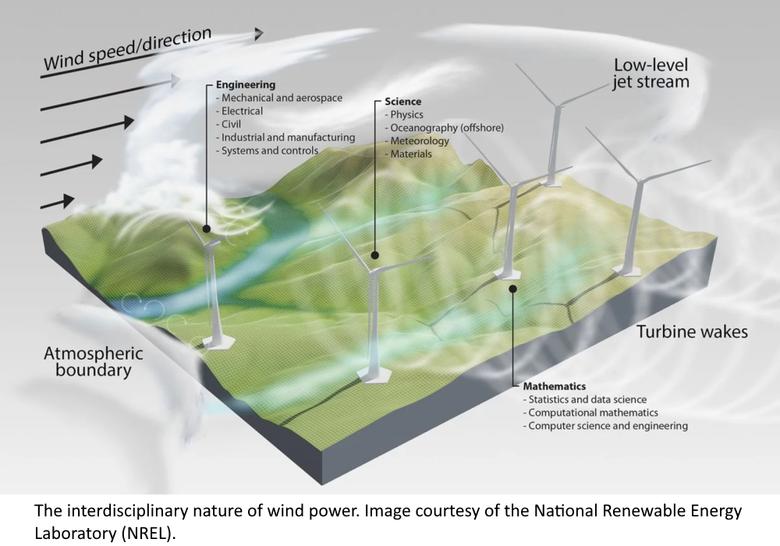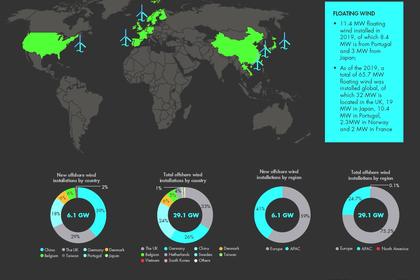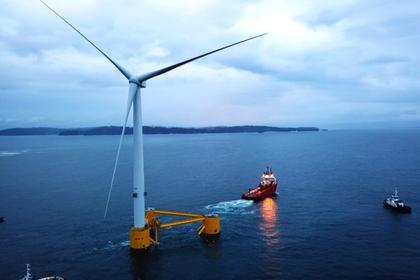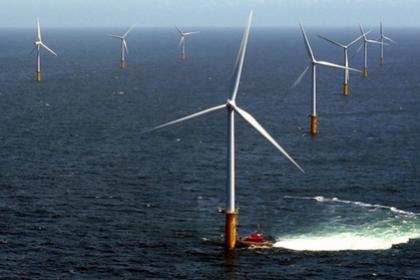
WIND ENERGY CHALLENGES

ENGINEERING - Wind currently provides 5 percent of the world’s electricity—roughly 0.6TW—but to curtail climate change, energy from renewable sources such as wind and solar will need to become much more substantial. Many scientists and engineers expect wind turbines to generate at least half of our power by 2050. For that to happen, both science and engineering will need to make significant advances in understanding the atmosphere at higher altitudes, predicting weather patterns, and designing the next generation of turbines.
Current Wind Turbine Technology
Today’s utility-scale wind turbines are designed to reach heights of 100 to 200 meters above the surface (ground or water). Over the past few decades, engineers have improved wind turbine designs, from optimized blade shapes and materials to intelligent control systems. Now, however, we’re reaching a point where the advancements are incremental at best.
From an economic perspective, larger and more powerful turbines generally deliver a lower levelized cost of electricity (LCOE), but we can’t simply build the same type of turbine on a larger scale. If turbines from 30 years ago had been scaled up to match the output of today’s wind generators, they would be 10 times heavier than the current generation of devices. Advanced materials will be needed to take the next step.
The Future Is Filled with Unknowns
To access faster, more powerful winds, we need turbines to reach heights well above 300 meters, putting them partly in the atmosphere’s well-known surface layer and partly in “terra incognita,” a largely unstudied slice of the atmosphere. This presents a number of problems.
First, once we get above the surface layer, we don’t know a lot about the daily, seasonal or annual variations in air density, wind speed and wind direction on a global scale. Although we have a few skyscrapers that are considerably taller than 500 meters, the buildings are, for the most part, static structures. Putting a giant spinning rotor on an object changes the whole dynamic. And large cities that house skyscrapers aren’t the natural habitat for wind turbines; we need more atmospheric data from many locations to determine the best places for wind farms and to understand the forces that the turbines will encounter.
Second, as turbines sweep a wider area in order to maximize power, their blades will straddle two layers of the atmosphere. This subjects them to different forces depending on whether they’re at the top of their cycle or at the bottom. Engineers haven’t yet studied the dynamics of such a machine.
Furthermore, what do taller wind turbines mean for the thousands of birds and bats that are killed every year when migrating through wind farms? Certain species, such as the golden eagle and the hoary bat, are already threatened with extinction due to their frequent encounters with wind turbines.
Finally, as renewable energy shifts from supplemental to baseload power, the electric grid will need to acquire more atmospheric data in real time and use intelligent systems to control individual turbines, wind farms, and power-flow devices in order to match supply and demand.
Engineering Challenges
Engineers will play an integral role in addressing all of the unknowns listed above. Advanced measurement technology will give scientists more information about the atmosphere in general and wind in particular. New materials will lead to stronger, more reliable turbines, and a modern grid will ensure that renewable energy can provide efficient and reliable baseload generation.
Measurement and Analysis
While lasers, ultrasound and radar are currently used to make atmospheric measurements, they tend to show averages while missing much of the detail that would impact individual turbines. Additional sensors and instrumentation, powered by energy harvesting and networked via the Internet of Things (IoT), will provide measurements with finer resolution. This data, coupled with advanced modeling and machine learning systems, will allow scientists to make better predictions at the microclimate scale. In addition to weather and climate predictions, advanced sensors will provide a more accurate wake analysis, helping engineers to determine the optimal spacing between turbines.
Materials and Design
Turbine blades made from stronger and lighter materials will be even more flexible than they are today, which complicates the structural dynamics of the turbine as it interacts with the atmosphere. New computational models will shed light on the blade turbulence and other aerodynamic factors that affect the operation of individual turbines and the wind farm as a whole. Additionally, the flexing at a macroscale causes defects at the nanoscale. Engineers will need to develop lighter materials that can withstand the flexing without suffering premature failure.
Offshore Wind
Offshore wind farms present a multitude of benefits: they don’t use land space, winds are more constant and less turbulent, turbine components can be built in coastal locations and easily towed out to sea, and they’re located closer to population centers. But with opportunities come challenges. Close to the shoreline, some people may object to the aesthetics caused by the presence of turbines. Farther from the coast, the water is too deep to build a traditional tower, so floating structures are preferable, but those bring their own set of issues, not the least of which is stability. One way in which engineers are addressing this is to put turbines in wind tunnels and mount them to robotic platforms that mimic wave motion. By analyzing the movements, engineers can better understand the aerodynamics and hydrodynamics of floating wind turbines.
Modern Power Grid
Today’s power grid is remarkably efficient and reliable, but it’s based on the assumption that the baseload generators have a relatively constant output. While that’s true for plants powered by coal, nuclear, hydro, oil and natural gas, renewable sources are intermittent, at least at a local level. But at any given moment, the wind is blowing—somewhere—at levels that are more than adequate to meet a significant portion of our power demands. The challenge is combining real-time climate data with past trends, in order to place wind farms in the best locations, optimize the outputs of individual turbines and wind farms, and coordinate power delivery and consumption.
On the supply and demand side, simulations can look at a week’s worth of actual atmospheric measurements and consumption rates, and determine how the grid would respond with various levels of renewable energy. Currently, NREL has run simulations that address a 35 percent renewable penetration, but the plan is to develop models that treat solar and wind as baseload generation with penetrations up to 90 percent.
Wind power is abundant and accessible on a global scale. With just a few advances in science and technology, renewable energy can supplant fossil fuels in a cost-effective manner while increasing the robustness and reliability of the power grid. We have the resources to accomplish this. Do we have the drive?
-----
Earlier:
















